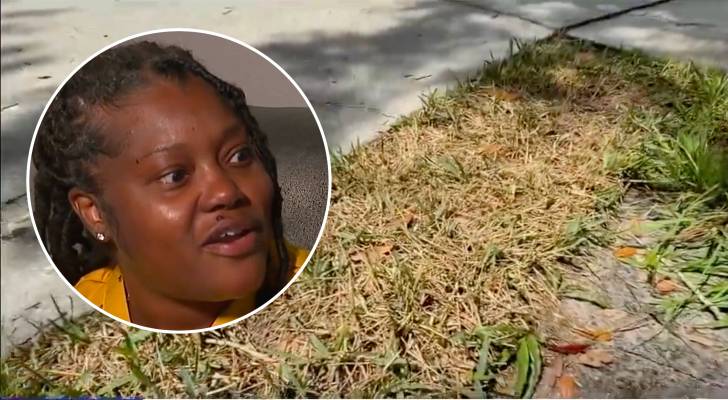Dawn Cooper, a veteran bus driver with the Southeastern Pennsylvania Transit Authority (SEPTA), says she’s seen a lot in 25 years, but “just when you think that’s it, you see some more.”
Fare evaders are face-to-face with drivers, so when they refuse to pay, Cooper just lets them ride. “I don’t want any situations, any confrontation,” she says.
And Cooper believes evasion happens “every day” on board SEPTA’s buses and by her estimate, more than half of the riders do not pay.
Her bosses at the transit authority agree — their latest report suggests fare evasion costs their system “millions of dollars each year.” Now they’re cracking down.
Local CBS News in Philadelphia followed the new fare evasion task force. In the hour that the reporters rode alongside officers on the metro bus route, 10 people were turned away for not paying their fare. Many others were reminded by officers to pay as they boarded.
Don’t miss
- I’m 49 years old and have nothing saved for retirement — what should I do? Don’t panic. Here are 6 of the easiest ways you can catch up (and fast)
- Robert Kiyosaki warns of a ‘Greater Depression’ coming to the US — with millions of Americans going poor. But he says these 2 ‘easy-money’ assets will bring in ‘great wealth’. How to get in now
- Gain potential quarterly income through this $1B private real estate fund — even if you’re not a millionaire. Here’s how to get started with as little as $10
Fare evasion in the City of Brotherly Love
Fare evasion could cost as much as $30 million per year according to Chief Chuck Lawson of the SEPTA Transit Police. Since spring 2024, his officers have had approval to begin issuing criminal citations for fare evasion. The efforts are already paying off: Transit Police have issued nearly 6,000 citations in that time and are authorized to issue fines up to $300. The task force also has a knock-on benefit for local police. SEPTA reports their citations have led to the arrest of 700 people with existing warrants for other crimes, also citing a 33% drop in serious crime in the transit network — the largest one-year decrease in their history.
While the fines are returning some money to a cash-starved system, it’s unlikely to make up the $213 million budget shortfall the transit authority is projecting. As a result, fare hikes and cuts to some less popular routes will be rolling out as well.
Fare evasion across the U.S.
What’s happening in southeastern Pennsylvania is part of a larger trend across the country. David Leonhardt of the New York Times reported that when he was a young man in the New York of the 80s, fare evasion seemed normal. During the city’s crackdown on crime in the 90s, fare evasion began to become less and less common, but now he sees a rise again. A separate Times article similarly found that 48% of riders on the city’s buses fail to pay.
And, the MTA reported losing an estimated $690 million in unpaid fares and tolls in 2022. They were able to force down subway fare evasion by 26% between 2022 and 2024 through a number of measures, including updating fare gates at some transit stations and adding additional enforcement officers.
Fare evasion may seem like a simple petty crime, but it has a ripple effect on transit systems and the economy, as a whole. Strong transit systems support a healthy economy, as the American Public Transportation Association (APTA) reports. For each billion dollar investment in transit systems, 50,000 jobs are created in the U.S. and there is a 5-to-1 economic return produced by long-term investment in public transit, according to their findings.
Read more: Want an extra $1,300,000 when you retire? Dave Ramsey says this 7-step plan ‘works every single time’ to kill debt, get rich in America — and that ‘anyone’ can do it
Fare evasion and violent crime
Fare evasion is also linked to more serious crimes. Janno Lieber, chairman and CEO of New York’s Metropolitan Transportation Authority, explained that "not every fare evader is a criminal" but virtually all criminals "evaded the fare."
In other words, fare evasion is worth a more serious approach because of its ties to other types of crime. Kevin Scott, general manager for security at Bi-State Development in St. Louis, told CBS News that the "security gates" and 1,200 cameras his transit system recently installed are less about catching fare-skippers than improving overall safety in the system.
"We’ve seen it time and again where something plays out on the street, then everybody runs for the MetroLink platform and that’s where the shooting happens or that’s where the stabbing happens," Scott said. "We’re really trying to impact the overall perception that the system is unsafe. We could have taken five or six steps forward with security, but if we have an incident play out, now we’re three or four steps back."
CBS reported that assaults and homicides on public transit nearly doubled between 2011 and 2023 and there is a growing perception across the country that public transit is unsafe. This trend is especially troubling for transit systems that saw huge dips in ridership during the pandemic and are struggling to regain riders and recover from the lost revenue during those years.
Rethinking transit policing
While making transit safer is obviously a benefit for the whole community, many experts and critics warn that increased policing may not be the right solution for improving mass transit systems in the states.
For example, Human Rights Watch reports that increased policing on transit systems has led to violence against transit officers, as well as shootings, injuries, deportations and deaths. They also reported that costly upgrades to fare gates don’t always deter fare evasions. New York City’s new fare gates reportedly can be opened with the swipe of a hand and Oakland’s $90 million fare gates see riders tailgating or wedging in after a paying customer.
Fare evasion officers are also more likely to target poorer neighborhoods and issue fines to people of color. In New York, for example, police fare enforcement actions were more than twice as common in low income neighborhoods between 2017 and 2018. Ana Levy also reported in her New York Times article that Black and Latinx people made up 73% of those arrested and issued summons for fare evasion in 2022.
Instead of increased policing, Human Rights Watch recommends full public funding for transit systems and they cite Luxembourg as an example of nationwide free public transit.
For regular transit riders, this crackdown on fare evasion across the country can mean increased pressure on their budgets, as the cost of living in other areas also continues to rise. The APTA reports that 55% of transit riders earn less than $50,000 per year — a figure that may mean fare evasion fines could have a serious impact on wallets. For now, riders should be prepared to pay as officials look to enforcement to address concerns.
What to read next
- JPMorgan sees gold soaring to $6,000/ounce — use this 1 simple IRA trick to lock in those potential shiny gains (before it’s too late)
- This is how American car dealers use the ‘4-square method’ to make big profits off you — and how you can ensure you pay a fair price for all your vehicle costs
- Here are 5 ‘must have’ items that Americans (almost) always overpay for — and very quickly regret. How many are hurting you?
- How much cash do you plan to keep on hand after you retire? Here are 3 of the biggest reasons you’ll need a substantial stash of savings in retirement
Like what you read? Join 200,000+ readers and get the best of Moneywise straight to your inbox every week. Subscribe for free.
This article provides information only and should not be construed as advice. It is provided without warranty of any kind.

